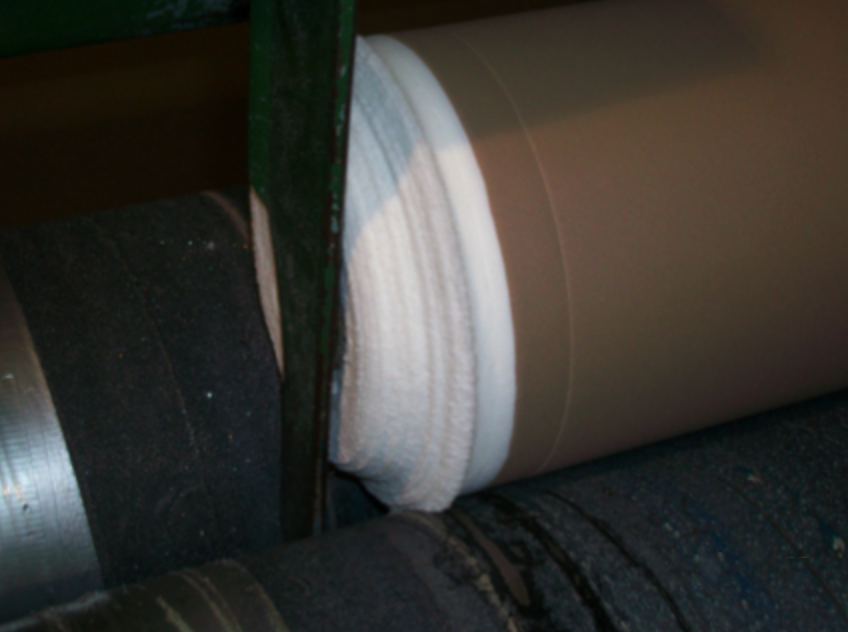Yarns and Fabrics 101
Laurie Moers

In the outdoor and industrial fabrics business, it is important to know industry terms. Just because you know what a word means, does not mean your customers do. In our industry, many terms are used interchangeably, ie. waterproof and water resistant. However, the difference between the two can often spell the difference between a satisfied customer and an unhappy one. Whether you are a seasoned industry veteran, just starting out, or somewhere in between, we think you will find these terms helpful and, at the minimum, a good refresher.
Woven Vs. Non-Woven
Woven or non-woven are terms referencing how a fabric is made.
- Non-woven fabrics are made a variety of ways, but are neither woven nor knit.
- Non-woven fabrics typically:
-
- Lack strength or dimensional stability,
- Are Inherently less expensive, and
- Are less abrasive.
- Woven fabrics interlace two sets of yarns at right angles to each other. Woven fabrics typically:
-
- Have strength and dimensional stability,
- Are more expensive, and
- Are rougher.
Warp/Weft/Fill/Pick/Loom
Warp, weft, fill, pick and loom are weaving terms.
- The set of yarns that run the length of the fabric (and parallel to the selvedge) is the warp.
- The set of yarns that run across the fabric is the weft, also known as fill. A single yarn running in this direction is a pick.
- A loom is a machine that weaves yarns into fabric.
Denier
Denier is a unit of weight which measures the fineness of yarn. One denier is the weight in grams of 9,000 meters of yarn. Higher deniers are heavier yarns.
- 1 denier = 1 gram per 9,000 meters = 0.05 grams per 450 meters. A fiber is generally considered a microfiber if it is 1 denier or less.
- A 600 denier filament is twice the weight of a 300 denier filament.
- A 1 denier polyester fiber has a diameter of about 10 micrometers.
Ply
Ply refers to the number of individual strands spun together to make the final yarn. A 2-ply means two strands have been twisted together, a 3-ply means three strands, and so on.
Filament/Staple (Spun)
Yarns are classified as either filament or staple (spun).
- Staple (spun) yarns are composed of relatively short lengths of fiber twisted (or spun) to hold them together. ie: cotton, acrylic, wool.
- Filament yarns are composed of continuous strands of fiber, produced from spinnerets. ie: polyester.
Selvage/Selvedge
The narrow edge of woven fabric that runs parallel to the warp is called the selvedge. Selvedges are typically made with stronger yarns in a tighter construction than the body of the fabric to prevent unraveling.
Hand
Hand refers to how the fabric feels, or the tactile qualities of a fabric. Hand is hard to quantify, as everyone’s “feel” is different. Touch attributes include:
- Softness
- Firmness
- Elasticity
- Fineness
- Resilience
Fastness/Color Fastness
Color fastness, or simply fastness, is the resistance of a fabric to change its coloring as a result of exposure to the elements. ie. resistance to fading. These elements include sunlight, humidity, atmospheric gases, washing, etc.
- Coated fabrics typically have less color fastness than solution-dyed fabrics.
- Due to the chemical makeup, red dyes are the least color fast.
Breathability
Breathability is the ability of a fabric to allow moisture vapor to be transmitted through the material. The higher the breathability number, the more water vapor escapes, meaning the more permeable (or porous) the fabric is.
Abrasion Resistance
Abrasion is the wearing away of any part of the material by rubbing against another surface. Coated fabrics will usually have a higher abrasion resistance, because rubbing surfaces have to wear through the coating before affecting the underlying fabric. Abrasion resistance indicates how a fabric will react when it rubs against something else. ie. travel covers, awnings, bimini tops, etc.
Dimensional Stability
Dimensional stability is how much a fabric stretches and shrinks. Some applications call for high dimensional stability and others call for low dimensional stability. For example, an awning or top, requires high dimensional stability to prevent the fabric from sagging and collecting water.
- Anywhere a fabric needs to stretch to fit unique curves would require a less dimensionally stable fabric.
- Some fabrics (i.e. acrylic) will actually grow when wet, as the yarns elongate.
Waterproof/Water Repellent/ Water Resistant
Waterproof, water repellent, and water resistant refer to the ability of the fabric to resist water.
- Waterproof: The ability for NO water to permeate the fabric. To be truly waterproof, the pores must be closed on a fabric.
- Water Resistant: The ability for very little water, at a high pressure, to permeate the fabric. The more water resistant a fabric is, the less water gets through it.
- Water Repellent: The ability of the fabric to bead moisture away and not have it soak into or through the fabric. The less water repellent a fabric is, the more it will “wet out” and lead to leaking.
- Virtually no fabric is 100% waterproof, especially after any amount of weathering. Most people ask for waterproof fabrics, and very few exist, as given enough water pressure most fabrics will leak. Waterproof and water resistant are often used interchangeably.
- The more water resistant a fabric is, the less breathable it is. Waterproof fabrics do not breath at all.
- The water resistance and repellency of all fabrics decrease with age.
Crazing
Crazing appears as thin, white lines on fabric, and is often the result of folding or creasing. Exposure to heat or sun will accelerate the disappearance of these lines.
Crock/Rub Off
Crock or rub off refers to the transfer of colorant from the fabric to another surface. These terms are used interchangeably and mean the same thing.
- Crock is seen mostly when fabrics come into contact with vinyls. The plasticizer in the vinyl softens the fabric coating, thus making it easier for the color to transfer.